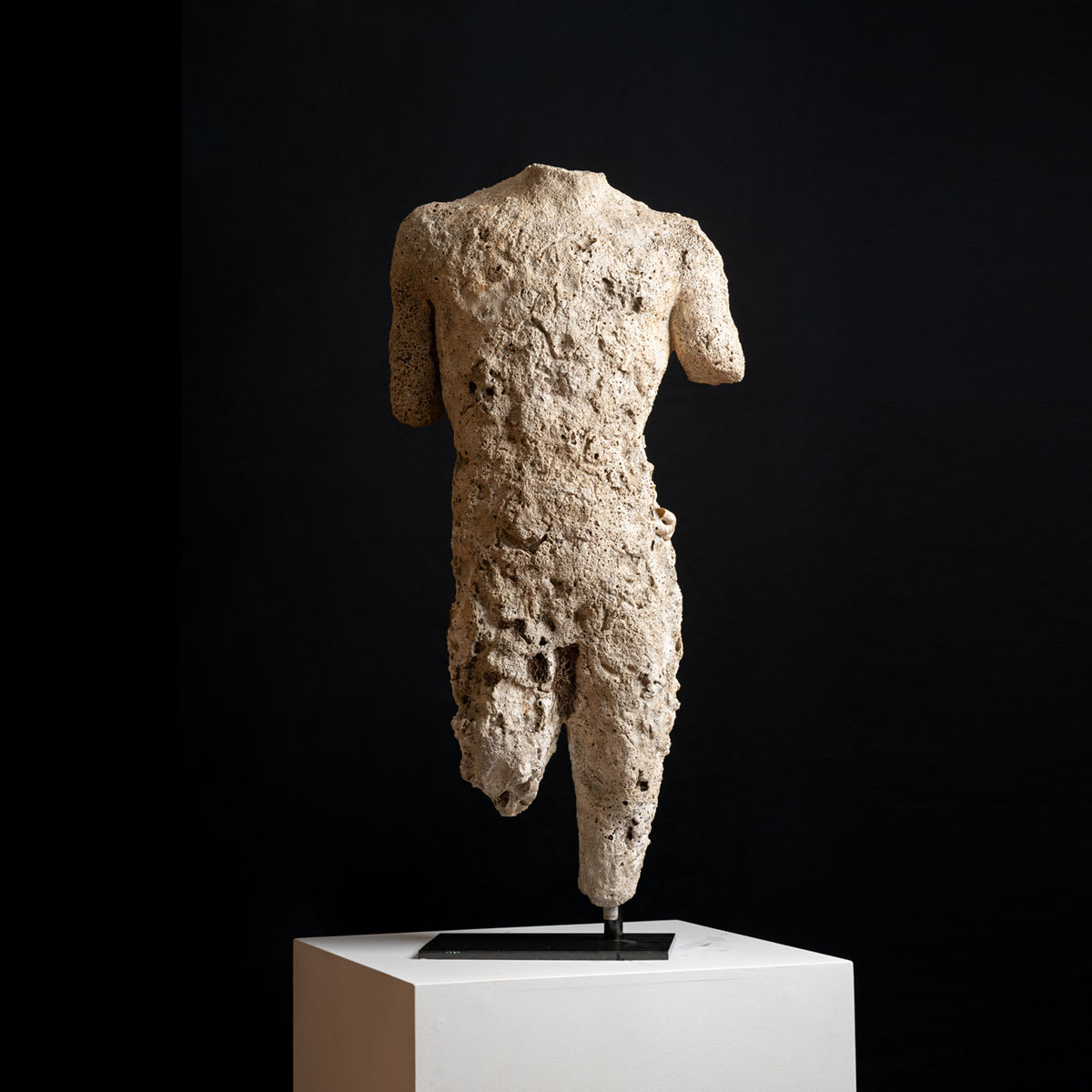Hellenistic Marble Torso of a Man, 3 Century BCE - 1st Century BCE
Marble
height 83.8 cm
height 33 in
height 33 in
X.0397
Further images
The conquests of Alexander the Great had a dramatic influence not only on the political structure of the Classical world, but also on the artistic landscape. The strict rules and...
The conquests of Alexander the Great had a dramatic influence not only on the political structure of the Classical world, but also on the artistic landscape. The strict rules and conventions that guided the aesthetic of the Classical era were expanded upon to allow artists to experiment with new forms and approaches. While the gods and mythology remained the dominant subjects, themes of everyday life became increasingly popular. Overall, the Hellenistic era can be characterized by a sense of increased naturalism as opposed to the idealized forms typical of the Classical age. In effect, Hellenistic naturalism can be viewed as a reaction to the works of the 4th Century master sculptors such as Praxitelis and Lysipos who sought to depict the human figure in more realistic terms. Sculptors and painters manipulated the effects of light and shadow to create dramatic compositions full of energy and emotion that depicted their subjects in moments of extreme tension or reflective meditation. The Hellenistic age remains one of the most important period in the history of Western Art, whose impact could be felt almost two thousand years later during the Baroque style of 17th Century Europe.
The surface of this gorgeous marble sculpture has been covered with a thick encrusted patina. The forms of the encrustation indicate that the work was submerged underwater for a significant portion of its history. Parts of the surface, in fact, seem to be carved from a coral reef. Some of the most important works of Ancient Greek art have been found underwater, including the famed Riace warriors. From the positioning of his limbs, we can tell that this young man was originally standing with his weight resting on his right leg. His left thigh projects slightly forward and his left shoulder is slightly lower than his right. In a typical Hellenistic fashion, the artist has chosen to represent this man in a moment of repose. Was this work once placed atop a seaside cliff, only to tumble into the waves during a natural disaster or perhaps a period of civil unrest. In some cases, works of art have been buried underwater when ancient vessels transporting commercial merchandize crashed at the bottom of the sea. Is it possible that this work was in the midst of being transported from the sculptor’s studio to the residence of a faraway patron? Resurrected from the deep, this magnificent sculpture is a testament to the creativity and innovation of the Hellenistic era.
The surface of this gorgeous marble sculpture has been covered with a thick encrusted patina. The forms of the encrustation indicate that the work was submerged underwater for a significant portion of its history. Parts of the surface, in fact, seem to be carved from a coral reef. Some of the most important works of Ancient Greek art have been found underwater, including the famed Riace warriors. From the positioning of his limbs, we can tell that this young man was originally standing with his weight resting on his right leg. His left thigh projects slightly forward and his left shoulder is slightly lower than his right. In a typical Hellenistic fashion, the artist has chosen to represent this man in a moment of repose. Was this work once placed atop a seaside cliff, only to tumble into the waves during a natural disaster or perhaps a period of civil unrest. In some cases, works of art have been buried underwater when ancient vessels transporting commercial merchandize crashed at the bottom of the sea. Is it possible that this work was in the midst of being transported from the sculptor’s studio to the residence of a faraway patron? Resurrected from the deep, this magnificent sculpture is a testament to the creativity and innovation of the Hellenistic era.
Provenance
Acquired from Galerie Uraeus, Paris, 2003Ex-Gawain McKinley collection (1945 - 1996) (France)
Reported to be found underwater.





